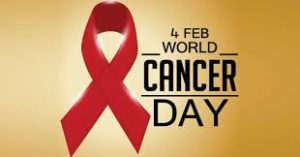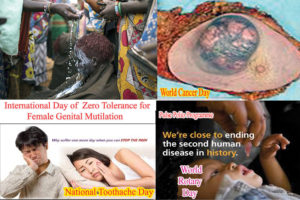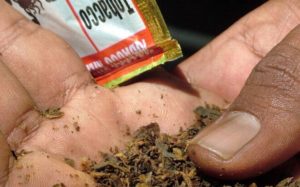Cancer risk products in the market : Who is responsible? Consolidated efforts from all sections of the society along with the government has to address certain challenges associated with cancer.


It’s almost two decades ever since 60 governments across the world started observing cancer day on 4th February 2000. Sadly, 9.6 million people die from cancer every year and 70 per cent of cancer deaths occur in low-to-middle income countries. As per the Indian Council of Medical Research (ICMR) data, breast cancer, cervical cancer, oral cancer, and lung cancer which together constitute 41 per cent of cancer burden.
The objective behind world cancer day is to save millions of preventable deaths each year by raising awareness about cancer, and pressing governments and individuals across the world to take action against the disease. Saving millions of people from dying by the government also means banning cancer causing products that are widely in use. That’s the minimal action expected of the government. Yes, we can’t hold the governments responsible for what we chose to buy or eat. But we can always hold governments responsible for what’s made available in the market and certified fit for consumption.
Why no ban on Tobacco?


Well, consolidated efforts from all sections of the society along with the government will address certain challenges associated with cancer. But autonomous bodies like the FSSAI and the National Tobacco Control Cell (NTCC) at the Ministry of Health and Family Welfare (MoHFW) can play their part in time and on time in regulating what’s available for consumption and what all have to be eliminated from the market without further ado.
Why do we celebrate particular days without actually understanding the objective behind! India is the second largest consumer of tobacco in the world. According to WHO, Smoking kills over one million people in India annually and is the fourth leading cause of non-communicable diseases (NCD) such as cancer and heart diseases, which account for 53 per cent of all deaths in India. Cigarettes constitute the principal form of tobacco usage in virtually every market of the world and account for 85% of global tobacco consumption by volume and 93% by value.
Tobacco is a major source of revenue to Governments in both the developed and emerging markets and cigarettes contribute the lion’s share of such revenues. Every time there is a loud cry about banning tobacco and closing down tobacco companies, our government displays their concern about small and marginal farmers, 400,000 of them who grow cigarette tobaccos and over 600,000 who grow non-cigarette tobaccos. The fact as we all know is farmer suicides have continued unabated since 1990s. Farmers are displaced, government schemes and assistance don’t reach the neediest segment, loan waivers don’t help small farmers and alleviate their penury but governments think tobacco cultivation does the magic.
How ridiculous does this look as we gear up to observe world cancer day! More so, the overall tax rate on all tobacco products in India is still very low compared to other middle-income countries. In essence, the overall concern shouldn’t be about increasing tax rates but about banning tobacco.
More than half the snacks that have been taken off the shelves in US were of Indian make. The US FDA reported that wafers, cookies and biscuits from one of India’s biggest sweets and snacks manufacturer contain poisonous and adulterated content. They said that the products are “filthy, putrid or decomposed-otherwise unfit”.
Pesticides and chemicals in food?


US stopped importing bhujiaczar’s snacks since 2015 when FDA detected pesticides in it. As the integrity of Indian food regulators came under the scanner, a big gun explained the discrepancy in a funny manner. He said that food safety standards differed from one country to another. Did he mean to say Indians do not mind eating pesticides! The two-minute noodle episode is still fresh in the minds of consumers. But for the food inspector at the Uttar Pradesh government’s Food Safety and Drug Administration andhis audacity, one year ban of the two minute noddle pack wouldn’t have happened. To a big cheese of the global giant, the crisis looked like an opportunity to emerge better but for those who had already consumed the‘Taste Bhi Health Bhi’ snack containing lead beyond permissible limit it’s an irreversible health crisis.
Chyawanprash banned in Canada for high amounts of lead and mercury is sold and bought in India as a nutritive jam. Hydrogenated oils, canned products, refined sugar and many more cancerous foods preserved using Sodium benzoate and Sodium nitriteadorn the shelves of all shops throughout the country. It is no secret that these two preservatives cause hyper reactivity and gastric cancer.
Have we ever come across brands being suspended in India! The two-minute noodle is again on the shelves and it depends on the aware/ unaware, careful/careless, wise/unwise consumer to rely on tales of two test results or conscious reasoning.
Anti-acidity drug Ranitidine is still sold in India after being banned in US for carcinogen content 3,000 times higher than the permissible limit.In our country, World cancer day must address at least one of the below
1. poor consumer awareness
2. Poor vigilance and enforcement by government agencies
3. India being a potential market for export rejects from other countries
India consistently ranks among the top three countries whose products are rejected for import by the regulator. Even if this doesn’t ring a bell, the consumers must read between the lines of what a spokesperson of a multinational said on the violations that include mislabelling and products containing allergens. He said, “There is a possibility that the products referred to, which are meant for sale in India, are entering the US through parallel imports. Since the labelling requirements for India are different, it is not surprising that the products do not fulfil the FDA requirement include mislabelling and products containing allergens”.
Colourless food might look unappetizing. So, the solution is to replace deadly cancerous dyes with natural ones extracted from plants. Banning synthetic dyes and promoting colourless healthy foods must go hand in hand. Should we await conclusive evidences that cancerous foods cause cancer? In addition to providing and regulating licenses, FSSAI can resort to monthly checks of random food products too. Packed and semi-processed food products with preservatives must be regularly scrutinized.
I think anything that comes in crinkly plastic wrapper is to be avoided because they contain shelf- stabilizing ever cancerous ingredients. How long do we intend to use microwave safe plastic food containers and cling wraps? Till cancer strike us or till researchers come out with convincing scientific evidence that any plastic when heated will release cancerous chemicals!
As we observed World cancer day on February 4th, may we take a vow to make lifestyle changes, advocate everything that will promise a cancer-free world and rally together against anything that ‘ups cancer risk’. Will vigilant food authorities take punitive action against those who indulge in manufacturing and selling substandard, adulterated and cancerous foods? Trust and faith in governments collapse even if one black sheep works hand in glove with those who make and sell harmful food products. Should FSSAI and CDSCO wait for some hero somewhere to blow the whistle?
“I AM AND I WILL” must motivate food safety officers to remain true to their conscience as they carry out their duties and responsibilities to ensure availability of safe and wholesome food for human consumption. Incidentally, whoever manufactures and sells harmful food products commits the offense of culpable homicide.


Elsa Lycias Joel
Mogappair East,Chennai ,Tamilnadu- 600037
Harry Sheridon
Noida, Uttar Pradesh – 201301











